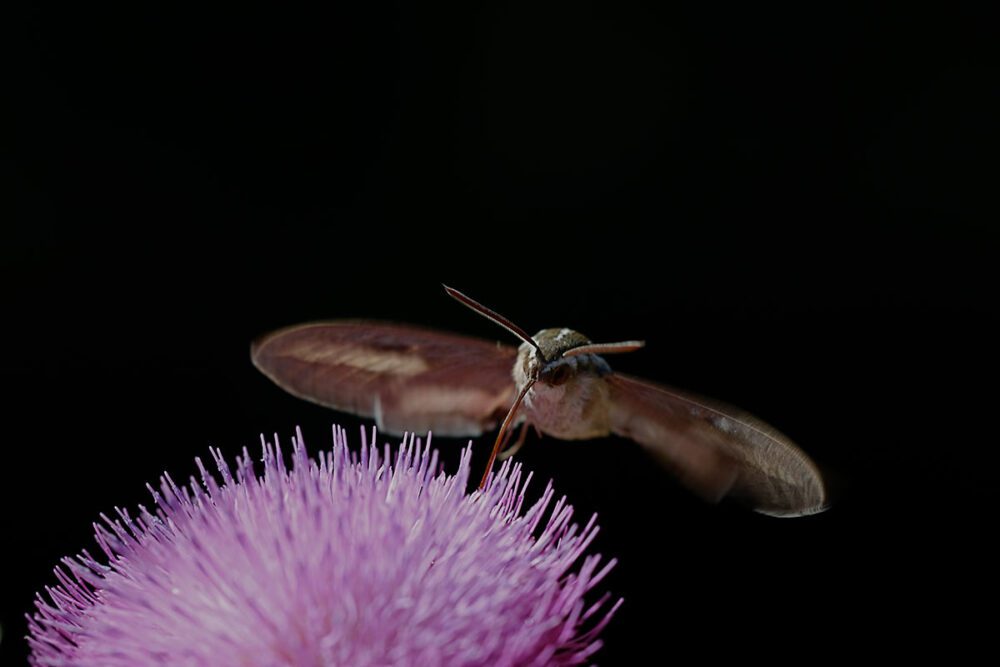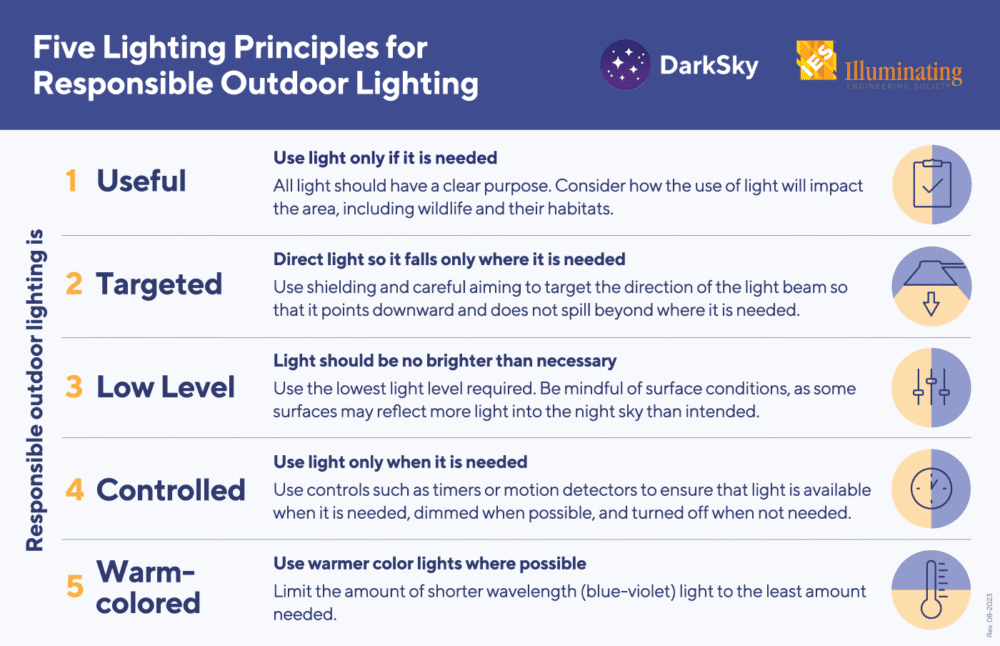During the day, summertime gardens are full of the buzz and flutter of bees, butterflies, and hummingbirds. However, pollination doesn’t stop at sunset! Here in New Mexico, many of our native plants are pollinated in the cool hours of night by moths, bats, and even bees. The US Fish and Wildlife Service conducted a study that concluded moths at night can be more effective pollinators than day-pollinating insects like bees, highlighting their importance across the country.

Since humans don’t have the fantastic nighttime eyesight of moths or echolocation skills of bats, we light up our cities, towns, and neighborhoods at night instead. Studies have shown that light pollution interferes with pollinators’ natural ability to find yucca, agave, evening primrose and other night-blooming flowers. Artificial light can confuse pollinators, causing them to avoid well-lit areas that may contain their desired habitat, or causing disruption to their circadian routines and behaviors. Moths or beetles confused by a bright porch light waste precious energy circling instead of sipping nectar and spreading pollen, sometimes never making it to their needed sustenance. The result is fewer pollinated flowers and shrinking populations of nocturnal pollinators. ALAN, or Artificial Light At Night, is a significant threat to nocturnal insects, as explained by The Xerces Society for Invertebrate Conservation, but reducing light pollution is a powerful way to protect wildlife.
Speaking of reducing light pollution, Dark Sky International advocates for limiting light pollution around the world, and has 5 recommended steps for creating responsible outdoor lighting.

New Mexico has its own chapter of Dark Sky advocates, and Los Alamos is lucky to have several passionate community members who worked with the County in 2022 to develop a phased light ordinance for County property. You can join the movement to preserve our night skies. By aligning your outdoor lighting with the recommended best practices, you’ll help keep the skies dark for nighttime pollinators.
Finally, if you want to learn even more about nocturnal pollinators, check out the YouTube webinar Pollinators After Dark: How Light Pollution Impacts the Night Shift, sponsored by the People and Pollinators Action Network in Colorado.
Text by Britton Donharl
